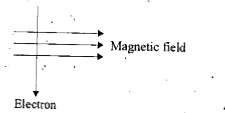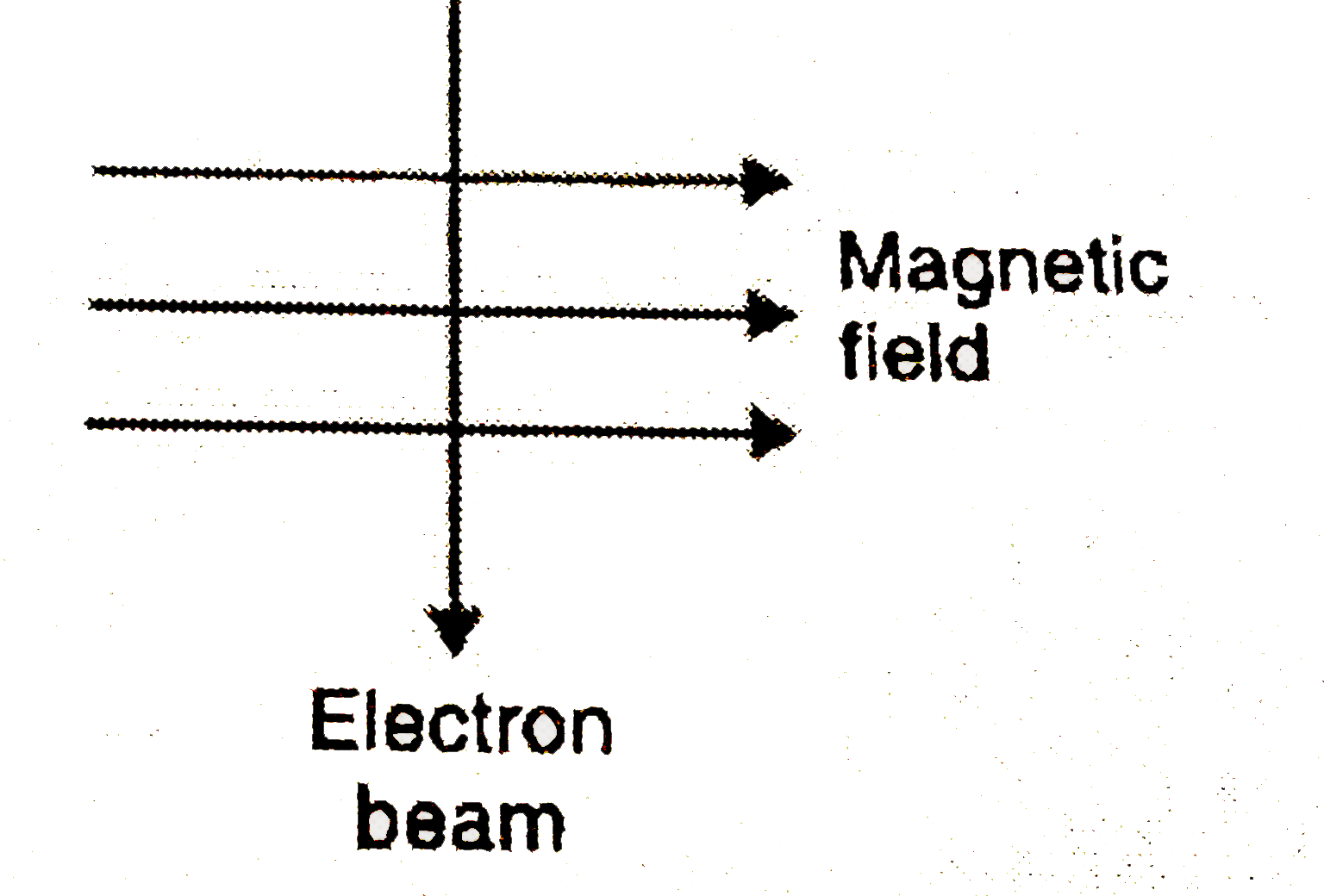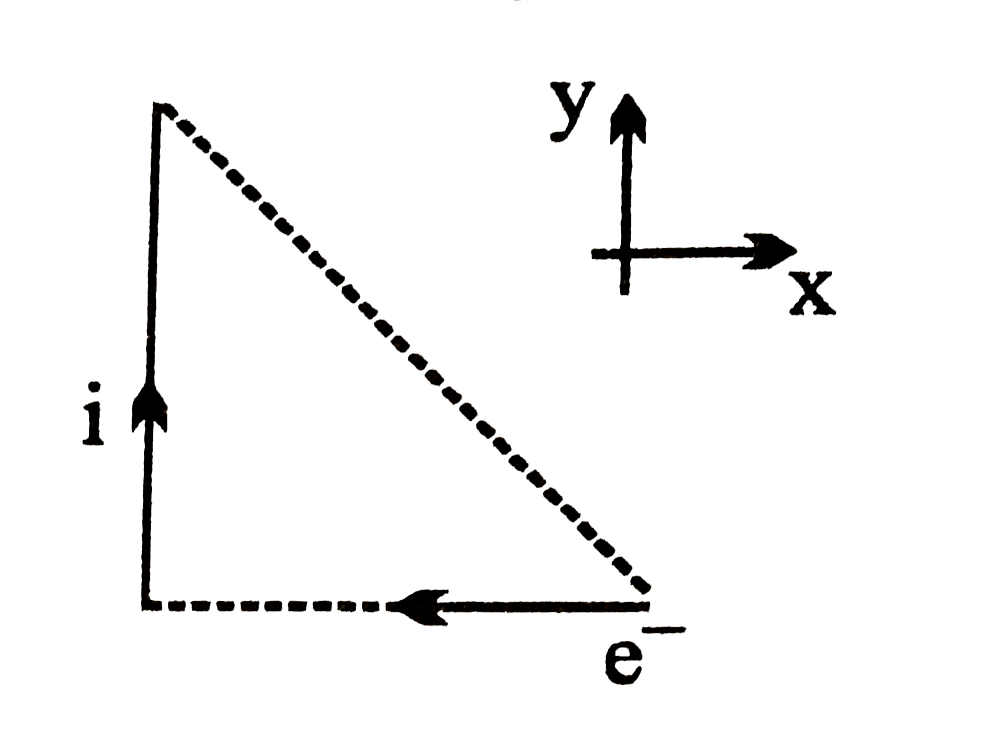An electron enters a magnetic field at right angles to it, as shown? What will be the direction of force acting. on the electron ? State the rule used to find the direction of this force.

The force is perpendicular to plane of page directed into the page. Fleming.s left hand rule is used to find the direction of this force.
Similar Questions
Why does a current carrying conductor kept in a magnetic field experience force ? On what factors does the direction of this force depend? Name and state the rule used for the determination of direction of this force.
View SolutionWhat is the magnitude and direction of force on an electron moving along the direction of the magnetic field.
View Solution
Knowledge Check
- Question 1 - Select One
An electron beam enters a magnetic field right angles to it as shown in the Figure.

The direction of force acting on the electron beam will be :Ato the leftBto the rightCinto the pageDout of the page - Question 2 - Select One
An electron enters in an electric field with its velocity in the direction of the electric lines of force. Then
AThe path of the electron will be a circleBThe path of the electron will be a parabolaCThe velocity of the electron will decreaseDThe velocity of the electron will increase - Question 3 - Select One
The direction of magnetic force on the electron as shown in the diagram is along
 .Ay−axisB−y−axisCz−axisD−z−axis
.Ay−axisB−y−axisCz−axisD−z−axis
An electron enters an electric field with its velocity in the direction of the electric lines of force. Then
View SolutionA neutron enters a magnetic field region, normally to the direction of magnetie field. Find the value of magnetic force on it.
View SolutionAnswer question numbers (a)-(d) on the basis of your understanding of the following paragraph and the related studied concepts :
Oersted demonstrated that an electric current flowing through a conductor produces a magnetic field. The field so produced exerts a force on a magnet placed in the vicinity of the conductor. Ampere suggested that the magnet must also exert an equal and opposite force on the current carrying conductor. The direction of the force on the conductor depends upon the direction of current as well as the direction of magnetic field. Force acting on the conductor is found maximum when the direction of current is at right angles to the direction of the the magnetic field. In such a condition we can use a simple rule to find the direction of the force on the conductor Electric motor, electric generator, microphone, loudspeaker and measuring instruments etc. make use of current carrying conductors and magnetic fields.
What happens to the direction of force experienced by a current carrying conductor placed in a magnetic field if direction of current flow is reversed ?View SolutionAnswer question numbers (a)-(d) on the basis of your understanding of the following paragraph and the related studied concepts :
Oersted demonstrated that an electric current flowing through a conductor produces a magnetic field. The field so produced exerts a force on a magnet placed in the vicinity of the conductor. Ampere suggested that the magnet must also exert an equal and opposite force on the current carrying conductor. The direction of the force on the conductor depends upon the direction of current as well as the direction of magnetic field. Force acting on the conductor is found maximum when the direction of current is at right angles to the direction of the the magnetic field. In such a condition we can use a simple rule to find the direction of the force on the conductor Electric motor, electric generator, microphone, loudspeaker and measuring instruments etc. make use of current carrying conductors and magnetic fields.
An electric motor and a generator both make use of current carrying conductors and magnetic fields, then what is the difference between the two. Give any one point.View SolutionAn electron enters a region that contains a magnetic field directed into the page as shown. The velocity vector of the electron makes an angle of 30∘ with the +y axis. What is the direction of the magnetic force on the electron when it enters the field ?
 View Solution
View Solution

